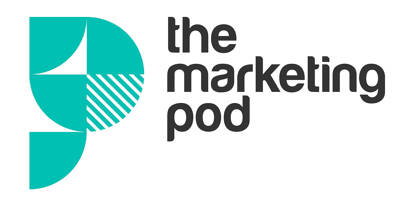Communicating strategically is a skill we tend to learn early in life: from convincing Santa that we really deserve that Lego set, to persuading our parents to adopt the puppy we fell in love with, we instinctively know that the way we communicate will impact our chances of success. And when we grow up, we transfer these skills to a variety of situations, including our corporate jobs.

All communication is, to a certain extent, strategic. However, corporate strategic communication can require a great deal of effort and expertise to achieve its intended goals. Corporate comms tend to deal with complex and sometimes highly technical topics, which need to be discussed in a way that makes them easily digestible to your audience. Not only that – corporate comms need to also engage your audience, grab their attention and convince them that what you have to say is important, before persuading them to take action in a way that supports your agenda.
This may sound clinical or even manipulative. But the truth is that thoughtful, well-planned corporate communication can be a force for good, helping brands convey the values behind their mission, as well as what they are doing to improve in areas such as ESG, DE&I, social value and more.
Engaging stakeholders: why is it so difficult?
Stakeholder engagement presents unique challenges. With the right communication approach, your stakeholders can become your brand’s biggest advocates. But how can you make sure they’re on board with your project and share your business objectives?
The first thing to do is acknowledge the diverse nature of stakeholders, meaning that different stakeholder groups may have different – and sometimes competing – priorities and needs. For example, if you’re talking about a renewable energy project, your Head of Sustainability will be interested in enhancing the organisation’s ESG credentials and reducing Scope 2 emissions, but the CFO might be concerned about costs and potential ROI.
The diversity of stakeholders also extends to linguistic, cultural and generational barriers that might impact their communication style and how they receive information. Finally, different stakeholder groups might have access to different levels of confidential information.
So, can we turn this heterogeneity into a strength? The key is to avoid a “blanket” messaging approach that overlooks the specificities of each audience, and instead opt for a highly targeted messaging strategy. To do that, it’s crucial to carry out a careful audience segmentation analysis – mapping the pain points, interests and preferred communication styles of each stakeholder group and developing a nuanced messaging strategy.
Communicating your environmental goals
With consumer, stakeholder and regulatory pressure increasing, most organisations are now keen to promote their environmental initiatives and showcase progress towards their carbon reduction goals. However, increased instances of greenwashing have undermined stakeholders’ trust in green marketing campaigns.
It’s important to remember that, as well as eroding stakeholder trust, greenwashing can also have serious legal and financial repercussions. For example, the new Digital Markets, Competition and Consumers Bill, currently being approved by the Parliament, sets out to impose civil penalties on greenwashing companies, with fines of up to 10% of their global turnover.
For this reason, it’s essential to build your strategic communications campaigns on measurable, realistic and science-based objectives, and to communicate progress in a transparent way. For example, don’t say “we follow net zero best practice” but “we’re committed to cut our Co2 emissions by 50% by 2025.”
In terms of how to craft your sustainability message, it’s best to avoid vague terminology that doesn’t have a standard definition, such as “green”, “clean” and “eco-friendly”. Instead, be specific: for example, replace “green energy” with “electricity from solar PV”.
And remember: if unsubstantiated environmental claims are counterproductive, silence is also not always a good strategy. Carbon disclosure obligations compel large UK companies to reveal their annual energy use and GHG emissions. Moreover, communicating transparently about carbon reduction progress, even when it’s not compulsory, can help you engage your consumers and stakeholders – including your investors.
Choosing the right partner
Strategic communication is crucial to convey your environmental goals and initiatives in a way that gets stakeholders on board, but developing a targeted communication plan for each group can be overwhelming.
Partnering with a full-service marketing agency with proven expertise in this area can help you manage your resources more effectively, access diverse marcomms skill sets, and launch your campaigns on time and on budget.
The Marketing Pod can remove the production headaches usually associated with high profile, strategic communications. We will manage the entire process for you, delivering high impact, creative and engaging reports – to a deadline. If you’d like to get our support for your strategic comms, get in touch with our team.
N.B. The information contained in this entry is provided by the above supplier, and does not necessarily reflect the views and opinions of the publisher


